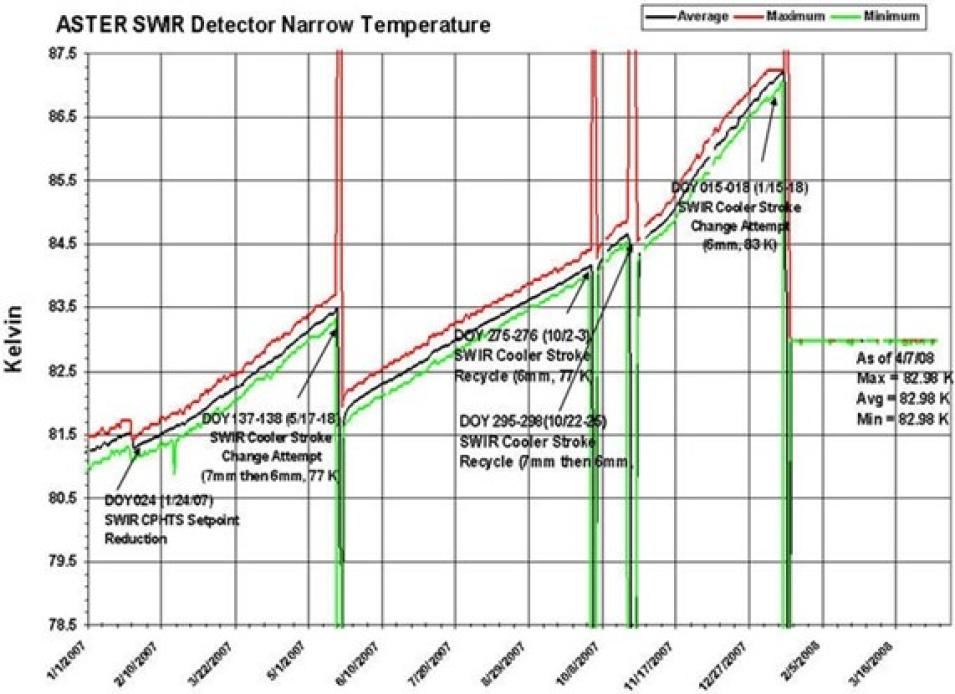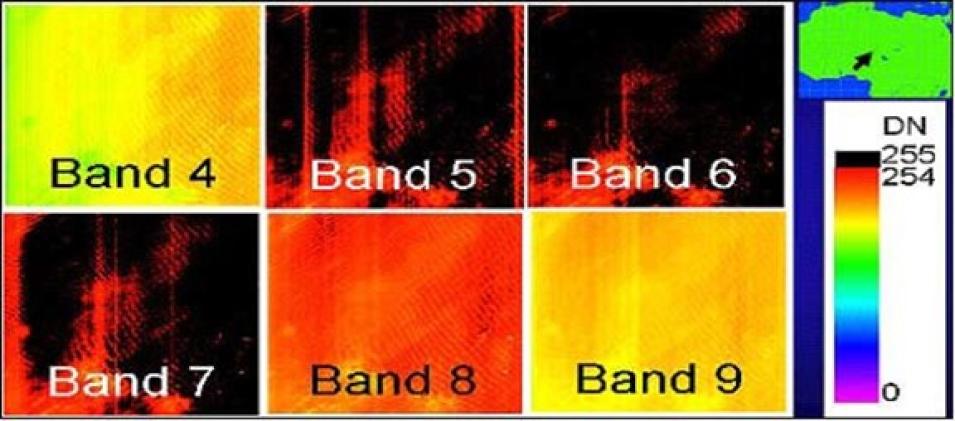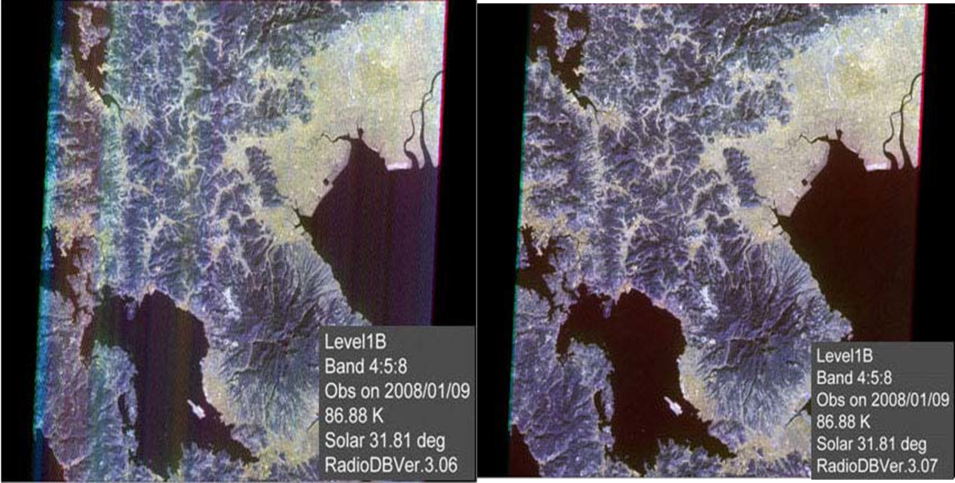Change in Status Alert - January 13, 2009
Advanced Spaceborne Thermal Emission and Reflection Radiometer (ASTER) shortwave infrared (SWIR) detectors are no longer functioning due to anomalously high SWIR detector temperatures. ASTER SWIR data acquired since April 2008 are not useable, and show saturation of values and severe striping. All attempts to bring the SWIR bands back to life have failed, and no further action is envisioned. Visible and near infrared (VNIR) and thermal infrared (TIR) data continue to show excellent quality, meeting all mission requirements and specifications.
LP DAAC offers nearly 1.5 million global ASTER Level 1A scenes and related on-demand products. The vast majority of these scenes were acquired prior to the SWIR detector temperature increase, and SWIR bands present may be used in investigations.
No further alerts are anticipated regarding the SWIR detector temperature situation.
Change in Status Alert - May 21, 2008
As previously reported, the ASTER SWIR detector temperature rose precipitously on April 23, 2008, and SWIR data saturation occurred. The SWIR recycling procedure initiated on May 7, 2008 was not successful in lowering the SWIR detector temperature. Users are advised that ASTER SWIR data acquired from late April to the present exhibit anomalous saturation of values and anomalous striping. Cloud cover assessment and TIR location accuracy have also been affected. The data quality impacts referenced in the April 9, 2008 alert still apply for the periods specified. Earlier archived data conform to mission specifications.
The ASTER Team is reviewing actions that might be taken in response to this situation. Additional advisories will continue to be provided.
Change in Status Alert - May 2, 2008
Users are advised that ASTER SWIR data acquired in late April and early May 2008 exhibit anomalous saturation of values and anomalous striping. Cloud cover assessment and TIR location accuracy have also been affected by the present situation.
Since January 2008, SWIR performance has been stable and data quality has been nominal. On April 23, 2008, the SWIR detector temperature rose precipitously, and SWIR Bands 5-9 saturated.
In an attempt to lower the SWIR detector temperature and improve data quality, the ASTER Team plans to commence another SWIR recycling procedure on May 7, 2008. If successful, stable SWIR performance and nominal data quality will be restored.
The data quality impacts referenced in the April 9, 2008 alert still apply for the periods specified.
Additional advisories will continue to be provided.
ASTER SWIR User Advisory - April 9, 2008
This advisory is written to users of ASTER SWIR data to alert them to the fact that some anomalous saturation of values has been observed in ASTER Bands 5 through 9 beginning May 2007. In addition, radiometric offset errors of up to 10 DN have been observed in these bands for data acquired between September 2007 and January 2008, resulting in noticeable imaging striping for some scenes. These problems are attributed to an increase in ASTER SWIR detector temperature believed to be caused by increased thermal resistance in the SWIR cryocooler. VNIR and TIR bands are unaffected by this problem.
The slow increase in SWIR detector temperature, which gradually reduces the dynamic range of the SWIR bands, did not become a problem until early in 2007, and it did not really affect data quality until the detector temperature exceeded 83K. Figure 1 shows the trend in SWIR detector temperature for the past year.


